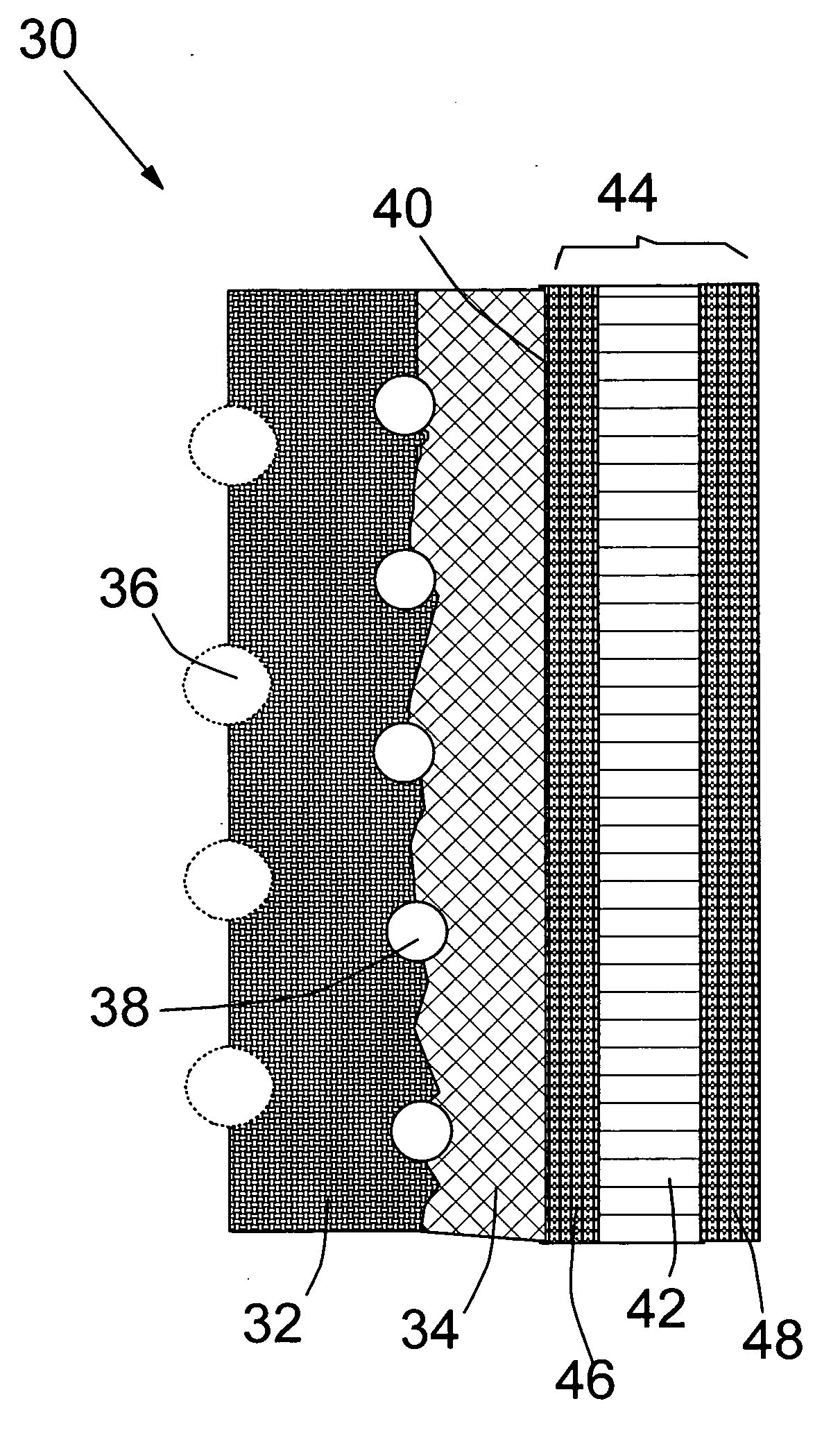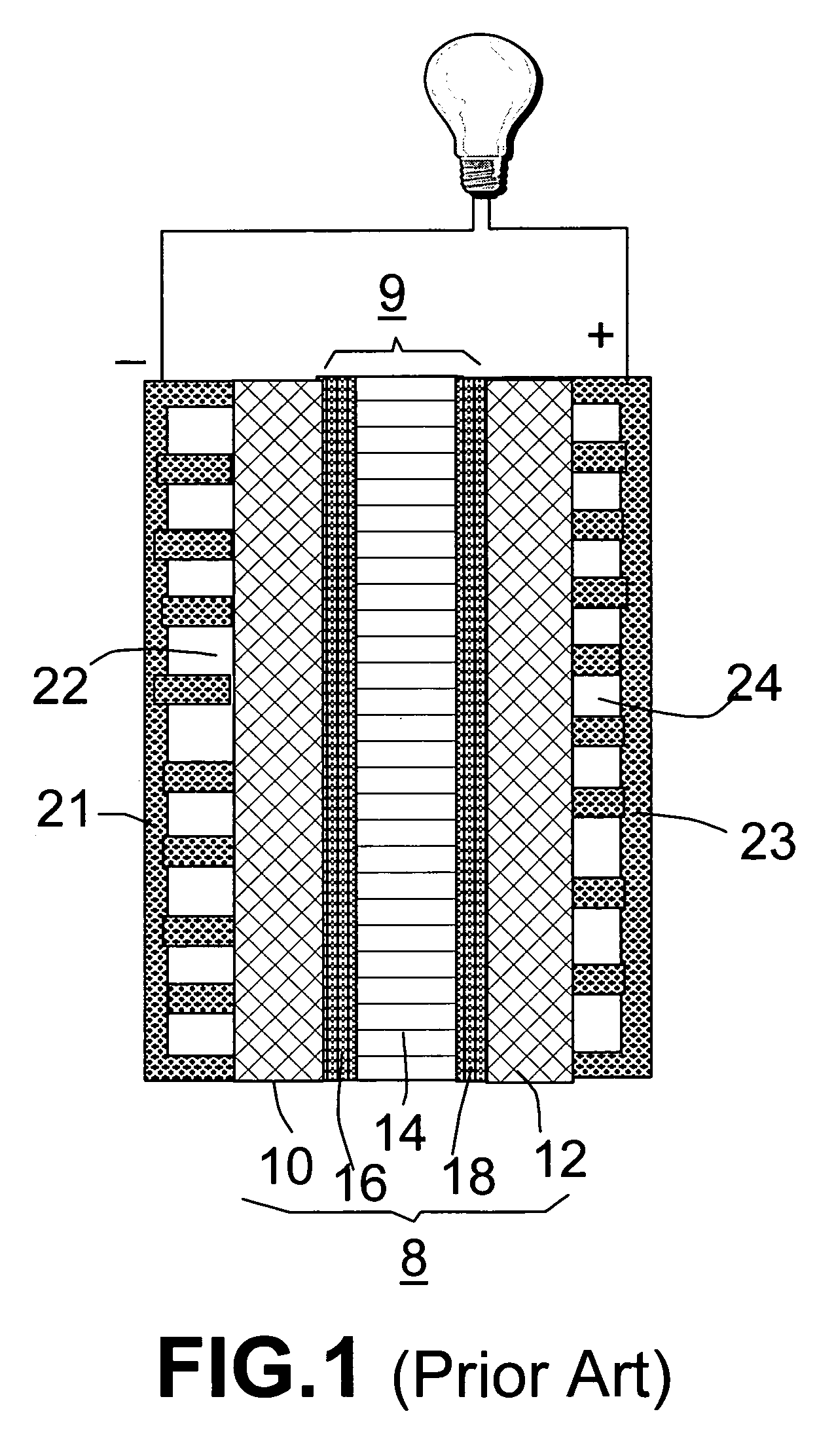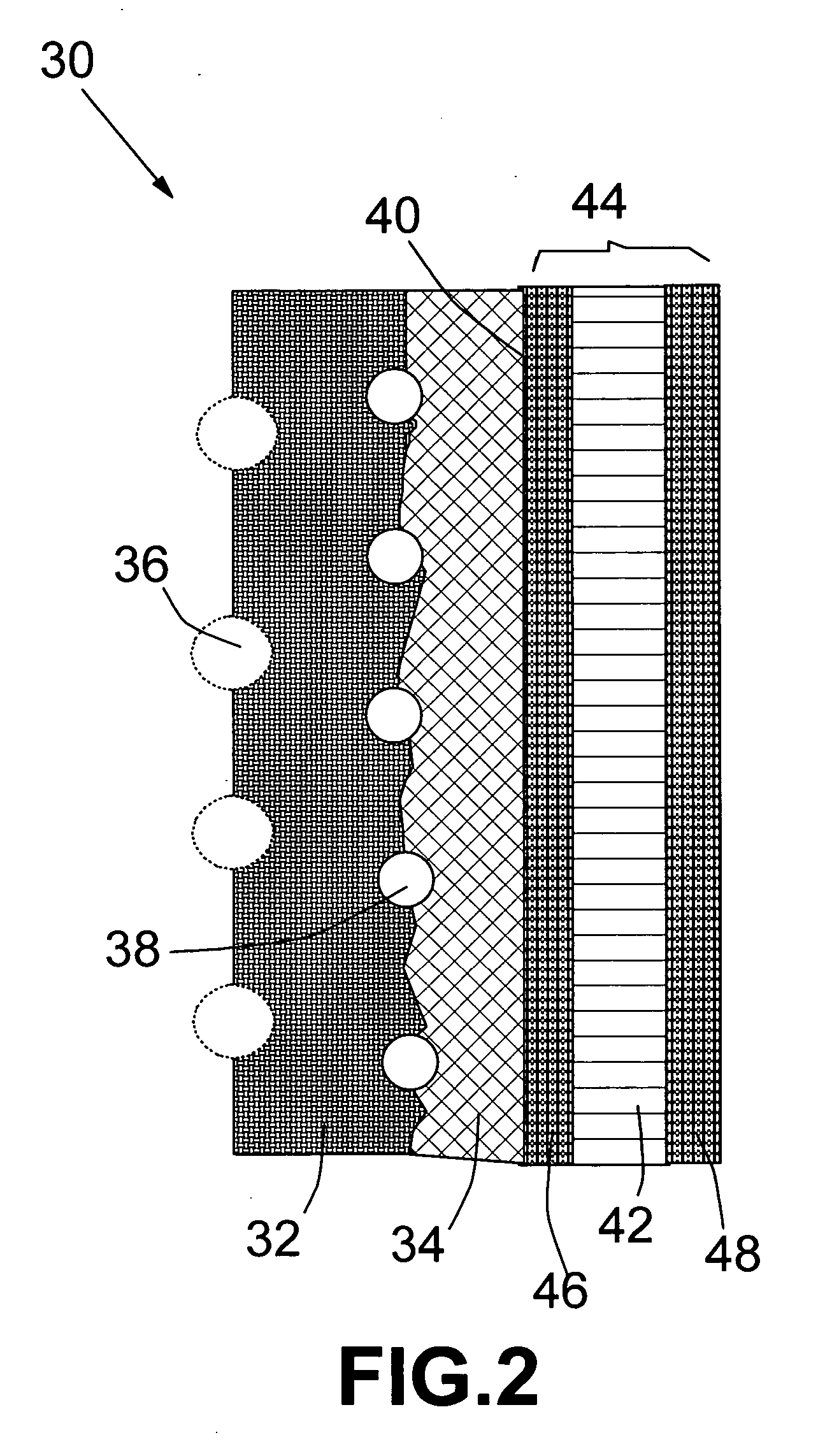Integrated bipolar plate/diffuser for a proton exchange membrane fuel cell
a proton exchange membrane and fuel cell technology, applied in the field of fuel cells, can solve the problems of bipolar plate, one of the most costly components of the pem fuel cell, and known to significantly impact the performance, durability, and cost of the fuel cell system, and achieve the effects of reducing the cost of the over-all fuel cell, reducing contact resistance or ohmic loss, and increasing output voltage and power
- Summary
- Abstract
- Description
- Claims
- Application Information
AI Technical Summary
Benefits of technology
Problems solved by technology
Method used
Image
Examples
Embodiment Construction
[0017] A prior art fuel cell, as shown in FIG. 1, typically comprises a membrane electrode assembly 8, which comprises a proton exchange membrane 14 (PEM), an anode backing layer 10 connected to one face of the PEM 14, and a cathode backing layer 12 connected to the opposite face of PEM 14. Anode backing layer 10 is also referred to as a fluid diffusion layer or diffuser, typically made of carbon paper or carbon cloth. A platinum / ruthenium electro-catalytic film 16 is positioned at the interface between the anode backing layer and PEM 14 for promoting oxidation of the methanol fuel. Similarly, at the cathode side, there are a backing layer or diffuser 12 (e.g., carbon paper or carbon cloth) and a platinum electro-catalytic film 18 positioned at the interface between the cathode backing layer and PEM 14 for promoting reduction of the oxidant.
[0018] In practice, the proton exchange membrane in a PEM-based fuel cell is typically coated on both sides with a catalyst (e.g., Pt / Ru or Pt)...
PUM
| Property | Measurement | Unit |
|---|---|---|
| lengths | aaaaa | aaaaa |
| temperature | aaaaa | aaaaa |
| porosity | aaaaa | aaaaa |
Abstract
Description
Claims
Application Information
 Login to View More
Login to View More - R&D
- Intellectual Property
- Life Sciences
- Materials
- Tech Scout
- Unparalleled Data Quality
- Higher Quality Content
- 60% Fewer Hallucinations
Browse by: Latest US Patents, China's latest patents, Technical Efficacy Thesaurus, Application Domain, Technology Topic, Popular Technical Reports.
© 2025 PatSnap. All rights reserved.Legal|Privacy policy|Modern Slavery Act Transparency Statement|Sitemap|About US| Contact US: help@patsnap.com



